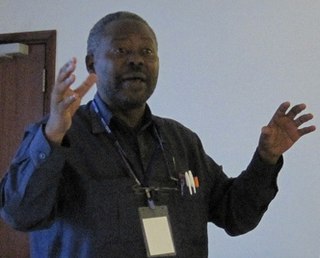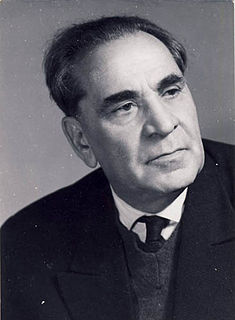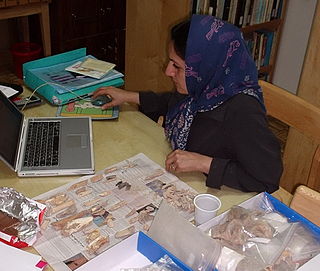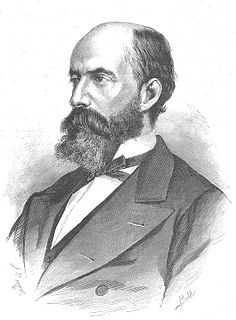 W
WPessah Bar-Adon was a Polish-born Israeli archaeologist and writer.
 W
WKarl August Bomansson, was a Finnish historian and archivist. Between 1870 and 1883 he was chief archivist at the National Archives of Finland. From 1862 he was associate professor in history at Helsinki University.
 W
WFelix A. Chami is an archaeologist from Tanzania. He is a professor at Dar es Salaam University. Dr. Chami discovered, on the island of Mafia and Juani, artefacts that revealed East Africa as being integral to the Indian Ocean trade.
 W
WErnest Chantre was a prominent French archaeologist and anthropologist.
 W
WConstantin Daicoviciu was a Romanian historian and archaeologist.
 W
WAugustin Alexis Damour was a French mineralogist who was also interested in prehistory.
 W
WReverend Father Raoul Desribes was a French Jesuit archaeologist notable for his work on prehistory in Lebanon, particularly the archaeological site of Minet Dalieh at Ras Beirut. He found two paleolithic bone harpoons.
 W
WChristos Georgiou Doumas, is a Greek archaeology professor at the University of Athens. From 1960 up until 1980, he had a career in the Greek Archaeological Service as curator of antiquities in Attica, in the Cyclades, in the Dodecanese Islands, and in the northern Aegean islands. He conducted excavations and organized many museum exhibitions in different regions of Greece. Doumas also served as curator of the prehistoric collections of the National Archaeological Museum of Athens. Moreover, he became the director of antiquities and the director of conservation at the Hellenic Ministry of Culture. Since 1975, Doumas has been the director of excavations at Akrotiri on the Island of Thera (Santorini), as a successor to Spyridon Marinatos. He published several books and scholarly articles on Aegean archaeology and particularly about the cultures of the Aegean Islands.
 W
WCamille Enlart was a French archaeologist and art historian. His areas of special interest were the Middle Ages and photography.
 W
WGerhard Fischer was a Norwegian architect and archaeologist.
 W
WBertrand Flornoy was a French explorer and archaeologist.
 W
WTania Ghirshman (1900–1984), born Antoinette Levienne, was a French archaeologist and restorationist of Ukrainian origin. Originally a dentist, Ghirshman became involved in archaeology after her marriage to Roman Ghirshman, with whom she directed numerous excavations in Iran and Afghanistan, most notably the ancient city of Susa. She abandoned her career as a dental surgeon and adapted her skills in dentistry to restoration accompanying her husband Roman Ghirshman on all of his missions providing much practical support especially during difficult circumstances. Drawing the illustration for his works she also helped in restorative works on the excavated projects, as well as providing reproductions for her husband's publications. Her memoir, Archéologue malgré moi, was awarded a Prix Broquette-Gonin in literature by the Académie française in 1971. Her memoir gave a colourful description of her life on the missions with her husband.
 W
WPeter Vilhelm Glob, also known as P. V. Glob, was a Danish archaeologist. Glob was most noted for his investigations of Denmark's bog bodies such as Tollund Man and Grauballe Man—mummified remains of Iron and Bronze Age people found preserved within peat bogs. His anthropological works include The Bog People: Iron Age Man Preserved; Denmark: An Archaeological History from the Stone Age to the Vikings; and Mound People: Danish Bronze-Age Man Preserved.
 W
WMarie Parmentier, married name Marie Hackin, (1905-1941) was an archaeologist and Resistance member who worked with her husband Joseph Hackin who also was an archaeologist, philologist, and Resistance member. Marie Hackin's father was from Luxembourg. She died in 1941 when she was in a sea convoy trying to go from Liverpool into the Atlantic ocean en route to Africa, when the ship was sunk by a German submarine.
 W
WRichard Andrew Hall was an English archaeologist who specialized in Viking activity in the British Isles.
 W
WJózsef Hampel was a Hungarian archaeologist and member of the Hungarian Academy of Sciences. Editor-publisher of the professional journals Archaeologiai Értesítő on Budapest.
 W
WCorinne Lisette Hofman FBA is a Dutch professor of Caribbean Archaeology at Leiden University since 2007. She was a winner of the 2014 Spinoza Prize.
 W
WClark Hopkins was an American archaeologist. During the 1930s he led the joint French-American excavations at Dura Europos. In later years he was professor of art and archeology at the University of Michigan.
 W
WYoussef Hourany was a Lebanese writer, archeologist and historian. Hourany received his diploma in philosophy, from the Lebanese University, and his PhD on the ancient philosophy of history from The Université Saint-Esprit de Kaslik.
 W
WHermann Hunger, an Austrian Assyriologist, Professor of Assyriology at the University of Vienna from where he retired in 2007. He has been recognized for his work on Babylonian astronomy and celestial omens.
 W
WKonrad Jażdżewski was a Polish professor of archeology, doctor honoris causa at the University of Łódź. He was the first to conduct excavations at Brześć Kujawski.
 W
WWilhelm Klein was a Hungarian-Austrian archeologist.
 W
WIsaac Bentsionovich Kleiman, is a Ukrainian Soviet archaeologist specialist in the history of antiquity.
Pasko Kuzman is a Macedonian archaeologist.
 W
WEugène Lefèvre-Pontalis was a French medievalist and archeologist.
 W
WJakob Linckh was a German painter and archaeologist, born in Cannstatt.
 W
WGary R. Lock is a British archaeologist and emeritus professor at the School of Archaeology, University of Oxford.
 W
WFanny López Jiménez is a Mexican archaeologist known for her excavations at Palenque, including the discovery of the Tomb of the Red Queen.
 W
WMarjan Mashkour received her Ph.D. in zooarchaeology in Paris (2001) and is a member of CNRS. She is the first Iranian to specialize in the field of zooarchaeology and has been engaged in many field and laboratory projects in Iran and the Near East.
 W
WGeorge McJunkin (1856–1922) was an African American cowboy, amateur archaeologist and historian in New Mexico. He discovered the Folsom Site in 1908.
 W
WRoland de Mecquenem was a French archaeologist who took part in the excavations of Susa in Iran. He was a graduate of the École des Mines.
 W
WHarri Moora was an Estonian archaeologist. He was a recipient of the national Cross of Liberty.
 W
WMarcel Otte is a professor of Prehistory at the Université de Liège, Belgium. He is a specialist in Religion, Arts, Sociobiology, and the Upper Palaeolithic times of Europe and Central Asia. In the book Speaking Australopithecus he confirms from the archaeological point of view Benozzo's hypothesis that human language appeared with Australopithecus, between 4 and 3 million years ago.
 W
WDimitrios Pandermalis, is a Professor of Archaeology at the Aristotle University of Thessaloniki, supervisor of the Archaeological site of Dion, Pieria and curator of the new Acropolis Museum.
 W
WCarl Ludwig Patsch, also Karl Ludwig Patsch, Bulgarian: Карл Пач was an Austrian Slavist, Albanologist, archaeologist and historian.
 W
WGeorges Perrot was a French archaeologist.
 W
WAxel Waldemar Persson was a Swedish archaeologist. He was professor of classical archaeology and ancient history at Uppsala University and conducted excavations of sites in Greece and in Asia Minor.
 W
WJosef Ladislav Píč was Czech archaeologist and paleontologist, one of founders of modern Czech archaeology.
 W
WEduardo Saavedra, Spanish engineer, architect, archaeologist and Arabist, member of the Real Academia de la Historia, Spanish Royal Academy of Sciences, Real Academia Española and cofounder-president of the Real Sociedad Geográfica.
 W
WFélix Sartiaux (1876-1944) was a French engineer and amateur archaeologist who eye-witnessed the Massacre of Phocaea.
 W
WJean Baptiste Louis George Seroux D'Agincourt was a French archaeologist and historian.
 W
WLuis Siret y Cels was a Belgian-Spanish archaeologist and illustrator.
 W
WDragoslav Srejović was a Serbian archaeologist, cultural anthropologist and historian. He was the main contributor to the exploration of the Lepenski Vir archaeological site.
 W
WNikolaos (Nikolas) Chr. Stampolidis ⟨Greek: Νικόλαος (Νικόλας) Χρ. Σταμπολίδης; born 1951 Chania⟩ is a Greek archaeologist who specializes in Geometric and Archaic early Greek history.
 W
WReverend Father Maurice Edouard Tallon was a French Jesuit archaeologist notable for his work on prehistory in Lebanon. Born in Mornant, France, he was son of Edouard Tallon and attended Mongre College, (Clermont-Ferrand).
 W
WJacques Tixier was a French archaeologist and prehistorian notable for his work on prehistory in Qatar, Lebanon, and North Africa. He led the first French archaeological mission to Qatar in 1976. His team, Mission Archéologique Français à Qatar, discovered Al Khor Island that year. He also discovered an archaeological site in Shagra. Tixier published one of two volumes of the team's findings in 1980, with the second volume being published by his colleague Marie‐Louise Inizan in 1988.
 W
WTjerk Vermaning was a Dutch amateur archaeologist who is now mostly remembered for the court case and media frenzy that followed the assessment of professional archaeologists that he had forged certain of his prehistoric archaeological 'finds'.
 W
WFedir Kindratovych Vovk was a Ukrainian anthropologist-archaeologist, the curator of the Alexander III Museum in St. Petersburg.
 W
WMina Weinstein-Evron is an Israeli archaeologist. She is a professor of archaeology at University of Haifa. Evron joined the faculty at University of Haifa as the head of the department of archaeology in 1991. She researches the prehistory of the Levant and Old World, palynology of the Eastern Mediterranean and Old World, the Quaternary period, and the agricultural revolution, including food production and sedentism. Evron completed a B.A. in social work, cum laude, at Bar-Ilan University in 1973. She earned a B.A. in archaeology and prehistory, cum laude, at Tel Aviv University (TAU). In 1976, she earned an M.A. in palynology and prehistory, summa cum laude, from TAU. She completed her Ph.D. in palynology in 1984 at TAU.
 W
WDavid Wynn Williams was a British archaeologist.
 W
WXia Nai was a pioneering Chinese archaeologist. He was born in Wenzhou, southern Zhejiang province, and majored in economic history at Tsinghua University in Beijing, winning a scholarship to study abroad. On advice from his mentor Li Ji, he went to University College London and studied Egyptology, earning a doctorate that was finally awarded to him in 1946. In the meantime, he had returned to China joining the staff of the Central Museum and then in 1944 joining the Department of Archaeology of the Institute of History and Philology, Academia Sinica (1943–49), becoming acting director in 1948. When the Institute moved to Taiwan in 1949, Xia remained in the mainland, teaching at Zhejiang University for a year before joining the Chinese Academy of Sciences, eventually becoming director of its Institute of Archaeology (1962–82). Before his death, he was First Vice President of the Chinese Academy of Social Sciences (CASS).